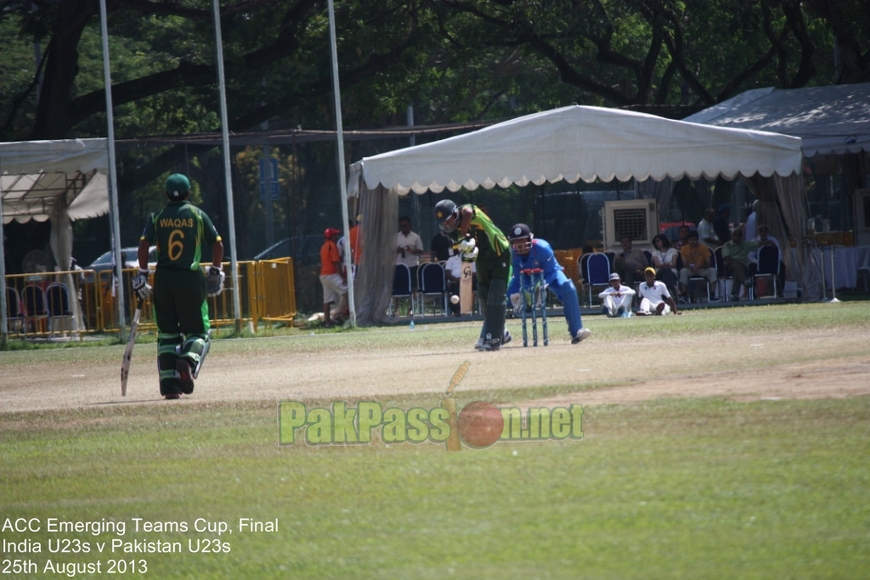In our latest opinion piece, we analyse the performance of Pakistan's Under-23s in SIngapore, who lost out in the tournament final to India.
by Arsheel Khan (26th August 2013
In the recently concluded 2013 Asian Cricket Council Emerging Teams Cup held in Singapore, Pakistan Under-23s were runners-up, losing out to India in the final. Led by Hammad Azam, Pakistan’s only two defeats in the tournament came at the hands of India – once in the group stage and then in the Final. Finishing second out of eight teams is not a bad showing, given that some of the matches were very closely contested.
vs India – lost by 3 wickets (13 balls remaining) defending 191
vs Afghanistan – won by 2 wickets (8 balls remaining) chasing 143
vs Nepal – won by 9 wickets (101 balls remaining) chasing 157
vs Sri Lanka – won by 1 wicket (7 balls remaining) chasing 231
vs India – lost by 9 wickets (98 balls remaining) defending 159
Simply based on the above, Pakistan’s bowling unit did more than a decent job in the overall containment and defending of totals where realistically applicable. Among the regular bowlers, Raza Hasan led the way with eight wickets, followed closely by Usman Qadir and Mohammad Nawaz who ended the tournament with seven and five wickets respectively.
On the other hand, despite some shades of individual brilliance in the form of Babar Azam’s 100* or Hammad Azam’s 66*, the overall resiliency of Pakistan’s batting order still left a lot to be desired. The opening match against India saw a top order collapse, leaving Pakistan reeling at 22/3. The following match against Afghanistan featured a middle/lower order collapse losing six wickets in the space of 40 runs chasing a below-par total of 143. And if there were an occasion that this should have been avoided at all costs, it had to be the Final. Well positioned at 88/2 , Pakistan lost seven wickets for just 19 runs, leaving them at 107/9. Had it not been for the 52-run partnership between Usman Qadir and Ehsan Adil, the scorecard would have called for a much more dismal reading.
A quick read of the scorecards for Pakistan’s matches indicates clearly that we saw different parts of our batting order struggle to make runs. Whether it’s a case of lacking temperament, application, or consistency, a high-level read of the scorecard would equate these to a collapse. In fact, Pakistan’s batting is no stranger to the term ‘collapse’. As die-hard fans of the Pakistan cricket team, we have witnessed many such batting collapses and a lot more than we would have liked to.
Some may call this an overreaction and reading too much into an issue, but these are the sorts of issues that need to be addressed by the PCB and in the coaching circles within Pakistan. In fact, if anything, I firmly believe and hope that youth tournaments such as these (U-23s, U-21s, U-19s, etc) are being used to highlight areas of improvement. Case in point: the batting. It is a whole lot more beneficial to be proactive in addressing any flaws in technique in the early stages rather than taking reactive measures where batting coaches are being appointed at the national level.
With all that said, it is important to note here that by no means is this an attempt to criticise or belittle a talented group of players who effectively are the future of Pakistan cricket. So I leave you with this: How do we address these issues before it becomes a case of ‘more of the same’? How do we best utilize and 'fine tune' our resources?











